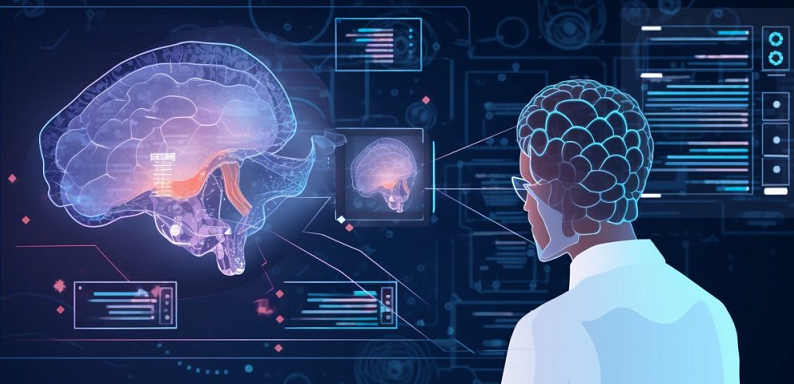In the rapidly evolving world of technology, one of the most fascinating and promising areas of research is neuromorphic computing. This innovative field seeks to bridge the gap between the computational prowess of modern technology and the unparalleled efficiency of the human brain. But what exactly is neuromorphic computing, and why is it garnering so much attention? Here we explore the intricacies of neuromorphic computing, an approach that draws inspiration from the structure and function of the human brain to revolutionize how computers process information.
Introduction to Neuromorphic Computing
In an era where technology is advancing at an unprecedented pace, one of the most groundbreaking and promising frontiers is neuromorphic computing. This field, which stands at the intersection of neuroscience and computer science, is redefining the limits of artificial intelligence and computing.
Definition of Neuromorphic Computing
Neuromorphic computing, a term coined in the late 1980s, refers to the design of computer chips that mimic the neural structure of the human brain. Unlike traditional computing architectures that are sequential and logic-based, neuromorphic computing employs systems that parallel the human brain’s structure and processing method. This approach results in computing that is not only highly efficient but also capable of learning and adapting in ways similar to the human brain.
Importance of Neuromorphic Computing in Modern Technology
The importance of neuromorphic computing in today’s technological landscape cannot be overstated. With the increasing demand for more efficient, intelligent, and adaptive computing systems, the traditional models are reaching their limits. Neuromorphic computing offers a path forward, promising significant advances in areas such as energy efficiency, data processing speed, and machine learning capabilities. It represents not just an evolution in computing technology but a revolution, one that could shape the future of AI, robotics, and beyond.
The Human Brain as a Model
The journey into neuromorphic computing begins with an understanding of its primary inspiration – the human brain. This biological marvel has intrigued and challenged scientists, serving as the ultimate blueprint for developing advanced computational models.
Structure and Function of the Human Brain
The human brain is an intricate organ, comprising approximately 86 billion neurons. Each neuron is connected to thousands of others, forming a complex network of synapses. This network is responsible for everything from basic sensory processing to the most complex cognitive functions. What makes the brain exceptionally efficient is its ability to perform parallel processing – managing and interpreting multiple streams of information simultaneously.
This capability is in stark contrast to traditional computers, which process tasks sequentially. The brain’s structure, characterized by this vast network of interconnected neurons, inspires the design of neuromorphic chips, aiming to replicate this parallel processing power.
Key Characteristics of Neuronal Processing
Neuronal processing in the brain is both dynamic and adaptive. Neurons communicate using electrical and chemical signals, which can change in strength and pattern based on new information or learning experiences. This adaptability, known as synaptic plasticity, is a critical aspect mimicked in neuromorphic computing. By emulating synaptic plasticity, neuromorphic systems can learn and evolve, improving their processing capabilities over time, much like how our brain learns and adapts [1].
Parallelism between Brain Functions and Computing Needs
The parallels between brain functions and computing needs are striking and form the core rationale for neuromorphic computing. The brain’s ability to handle various tasks efficiently, from visual processing to decision-making, all while consuming minimal energy, is a model of efficiency that computing technologies aspire to achieve.
Neuromorphic computing seeks to emulate this efficiency, aiming to create systems that are not only powerful in terms of processing speed and capacity but also energy-efficient and capable of real-time learning and adaptation.

Fundamentals of Neuromorphic Computing
Having explored the human brain as the model for neuromorphic computing, it’s now essential to delve into the fundamentals of this innovative technology. Neuromorphic computing is not just a single technology but a confluence of various principles and techniques that draw inspiration from neuroscience.
Historical Background and Development of Neuromorphic Computing
The concept of neuromorphic computing can be traced back to the late 1980s when Caltech researcher Carver Mead first proposed the idea of using analog circuits to mimic the processes of the human brain. Mead’s work laid the foundation for what would become a new field, blending elements of neuroscience, physics, and computer science [2].
Over the decades, advancements in technology and a deeper understanding of the brain’s mechanisms have propelled neuromorphic computing from theoretical concept to practical application. This journey has seen the development of specialized hardware and algorithms designed to emulate the brain’s efficiency and learning capabilities.
Core Principles and Technologies of Neuromorphic Computing
At the heart of neuromorphic computing are a few key principles and technologies. The first is the use of specialized hardware, such as neuromorphic chips, designed to replicate the neural structure of the brain. These chips use a network of artificial neurons and synapses to process information in a parallel, distributed manner, much like the brain. Another crucial technology is the development of learning algorithms that allow these systems to adapt and learn over time, similar to how neural connections in the brain strengthen or weaken through learning and experience.
Comparisons of Neuromorphic Computing with Traditional Computing Models
Neuromorphic computing represents a significant departure from traditional computing models. While conventional computers use binary logic and operate in a sequential, deterministic manner, neuromorphic systems process information in a way that is inherently parallel and probabilistic.
This difference is not just in processing style but also in efficiency and adaptability. Neuromorphic computers, for instance, are capable of performing complex tasks like pattern recognition and decision-making more efficiently, particularly in terms of energy consumption and speed, compared to their traditional counterparts.

Architectural Aspects of Neuromorphic Computing
After exploring the fundamental principles of neuromorphic computing, it becomes crucial to understand its architectural aspects. The architecture of neuromorphic computing systems is what sets them apart from traditional computing models.
Design and Components of Neuromorphic Chips
The core of neuromorphic computing lies in its specialized chips, designed to emulate the neural structure of the human brain. These chips consist of a dense network of artificial neurons and synapses, capable of parallel processing and dynamic information handling. Each artificial neuron in these chips functions similarly to biological neurons, processing and transmitting information through electrical impulses.
The synapses in these chips are capable of adjusting their connection strengths, allowing the system to learn and adapt. This dynamic architecture enables neuromorphic chips to process information more efficiently and flexibly than traditional silicon-based processors.
Integration of Neural Networks
A significant aspect of neuromorphic computing is the integration of neural networks. These networks, modeled after the brain’s neural networks, are comprised of layers of interconnected nodes (artificial neurons) that process and transmit data. Neuromorphic systems use these networks to perform complex computations such as pattern recognition, decision making, and sensory data interpretation. The design of these networks is key to their efficiency, allowing them to handle vast amounts of data with minimal energy consumption, much like the human brain [3].
Energy Efficiency and Speed Considerations
One of the most compelling advantages of neuromorphic computing is its energy efficiency. Traditional computing systems, especially those handling large-scale data processing and AI tasks, consume significant amounts of energy. In contrast, neuromorphic systems, with their brain-inspired architecture, can perform similar tasks more efficiently.
This efficiency arises from their ability to process information in a distributed, parallel manner, significantly reducing the energy required for complex computations. Additionally, the speed at which neuromorphic systems can operate is another crucial factor. By processing data in parallel and utilizing adaptive learning algorithms, these systems can make quick decisions, a vital feature for applications like autonomous vehicles and real-time data analytics.
Applications of Neuromorphic Computing
Having examined the architectural aspects of neuromorphic computing, it’s time to explore its real-world applications. The unique capabilities of neuromorphic systems, such as high efficiency, adaptability, and speed, make them suitable for a wide range of applications. These applications span various sectors, demonstrating the versatility and transformative potential of neuromorphic computing. Let’s delve into some of the key areas where neuromorphic computing is making a significant impact.
Robotics and Autonomous Systems Involving Neuromorphic Computing
In the field of robotics and autonomous systems, neuromorphic computing is a game-changer. The ability of neuromorphic systems to process sensory data in real-time makes them ideal for robots requiring quick decision-making and adaptive learning capabilities.
For example, in autonomous vehicles, neuromorphic chips can process vast amounts of data from sensors and cameras quickly and efficiently, enabling faster and safer decision-making on the road. Similarly, in industrial robots, neuromorphic computing can enhance precision and adaptability, leading to more efficient manufacturing processes [4].
Neuromorphic Computing and Advanced Data Analytics
Neuromorphic computing is also revolutionizing the field of data analytics. With their ability to process large datasets efficiently, neuromorphic systems are well-suited for complex data analysis tasks such as pattern recognition, predictive modeling, and real-time analytics. This capability is particularly beneficial in areas like financial services, where quick analysis of market trends is crucial, and in healthcare, where patient data can be analyzed more effectively to provide personalized treatment plans.
Healthcare and Biomedical Engineering Using Neuromorphic Computing
The healthcare sector is witnessing transformative applications of neuromorphic computing. In biomedical engineering, neuromorphic chips are being used to develop advanced prosthetics that can mimic natural movements more closely. These chips process sensory input from the user’s environment, allowing for more intuitive and responsive control of the prosthetic. Additionally, in medical diagnostics, neuromorphic computing can assist in analyzing complex medical images, enhancing the accuracy and speed of diagnoses.
Future Potential of Neuromorphic Computing in Various Fields
The potential applications of neuromorphic computing extend far beyond the current uses. In the future, we can expect to see its integration in areas like environmental monitoring, where its ability to process data from multiple sensors can be used for more accurate climate modeling and disaster prediction. The education sector could also benefit from customized learning experiences based on neuromorphic systems’ ability to adapt and learn from user interactions.
References
[1] Neuromorphic Computing and Engineering, Next Wave of AI Capabilities
[2] Opportunities for neuromorphic computing algorithms and applications
[3] Neuromorphic Computing
[4] Neuromorphic computing

